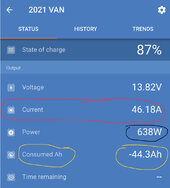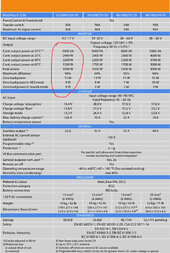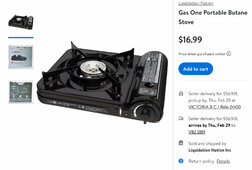Thanks for the infos.
38w idling is still kinda huge compared to the low wattage of the victron stuff, but then price is wayy different wtf.
I think i'm gonna get a good alternator but set myself for 2x 300ah batteries at 12v so i have 600ah that i can refill with shore/ev charging, alternator and lightish 350w solar.
I mean there isnt a way to overcome the consumption as well as with bigger batteries.. and 600Ah for my setup is kinda big
I’m late to the party here
@atelierminceur
I have built 2 Ram Promaster Camper Vans. Design / Building Vans is just a very long list of compromises ( If you don’t get that now, you will when you are done )

.
An energy audit, or “Loads Calculations Spreadsheet” is the first thing you should do. Electrical design starts at the loads & work’s itself back. Also when I say loads I am referring to you planned now loads & your possible future loads ,,, van electrical systems trend to grow in size rather than shrink. Then for your van’s electrical system it will be blaa, blaa, blaa, blaa & “How Are You Going to Charge Your Batteries”? It always comes down to that ,,, always.
“All Things Heat” well and Air Conditioning; How are you going to deal with “All Things Heat”? In North America we have a standard 20lb propane tank ( barbecue size ). 1 20 lb tank holds the same energy as 116 - 100Ahr Lithium Batteries.

My vans have 120vac ( never use it ) & 12vdc 300Ahr AGMs


. We have a Propex HS2800 furnace. The fridge is a 12vdc & 120vac Truck Fridge “TF130”.
There is your “Theory” & “Actual” ,,, They are different. You can design for your “Theory”, but I recommend planning for possible expansion ,,, space, wire capacity, easily altered design. More on that if you wish, but it is best to not paint yourself into a corner.
Here is a link to my latest van;

www.promasterforum.com
So my way of dealing with energy management ( what electrical is really ), is;
- Conservation ( This is the Biggest thing one can do for long term boondocking )
- Propane ( 2 -20 lb tanks = 232 100Ahr Lithium Batteries )
My biggest electrical loads are both 12vdc; Fridge & Propane Furnace ( blower ). BTW both actually “heat” the interior of the “well insulated” van

. In the summertime of course the furnace is off & we have to attempt to dissipate the heat frm the fridge coil.
So ,,, So much of your van design is going to depend ,,, season, weather, location, etc.
On another note; The most expensive coffee

️ I have ever purchased was @ Starbucks in Bern



,,, So I feel ya on the electrical equipment costs if that was any indication.
Bern ,,, Expensive Coffee, Rose Garden, & This

;









